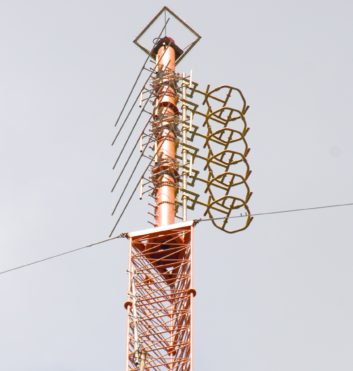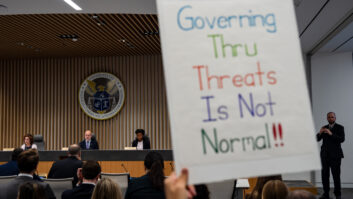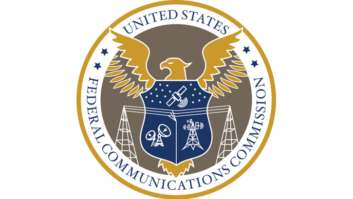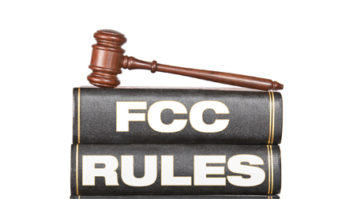
The FCC has released the details of its order allowing FM broadcasters to use computer modeling to verify directional antennas.
It also explained why it didn’t adopt several proposals that were in the original notice of proposed rulemaking.
The most common reason to use a directional antenna by a commercial full-power FM is to allow it to “short-space” to another FM station while maintaining contour protection to that station.
The new rules allow applicants for directional FM facilities an option to verify the directional antenna patterns by submitting results from computer models depicting the antenna’s performance. The results must be generated by the antenna’s manufacturer.
The manufacturers are deemed to be in the best position to perform computer modeling of their products because they have the historic data to know how a specific radiator performs in a particular environment.
The FCC disagreed with manufacturer Electronics Research Inc. (ERI), which had opposed the rule change. ERI expressed “serious concerns” that the change would lead to protracted and contentious interference disputes, and that computer models should be verified through measurement at full or fractional scale.
The FCC noted that under current rules, when applicants submit their showings, they almost always rely on tabulations from the antenna manufacturer of the measured relative field pattern, performed on a full-scale test range or with a scale model.
The commission said manufacturers are in the best position to ensure the validity of the computer model and the accuracy of the results, and that manufacturers have an incentive to represent their products’ performance accurately, “both to protect their own reputations and to avoid negative consequences for their customers who face interference complaints and regulatory action if their antenna patterns do not match what is authorized in their license.”
The commission acknowledged NAB’s concern that manufacturer data should not be automatically accepted without a demonstration that the modeler has a background in physics or electromagnetic theory. But given the varying backgrounds of broadcast engineers, it said, “we do not wish to codify what constitutes qualifications to perform computer modeling.”
It said that if a challenge arises to a computer model, for example through interference complaints, “we can and would seek further information regarding that model, including the qualifications of those preparing and performing the modeling.”
The FCC also declined “at this time” to expand the range of entities authorized to perform computer modeling. “Although there is no such limitation on those who can perform computer modeling for AM and DTV directional antennas, we find a more cautious approach is required for FM, given the greater number of FM stations versus DTV stations using directional antennas, and given that AM directional patterns are subject to continual verification through sampling that is not possible with FM directional antennas.”
However it left open the possibility of rethinking that decision as the industry gains experience with FM modeling.
The agency also decided not to prescribe any particular modeling software for antenna manufacturers to use, leaving this to their discretion and allowing them to use commercially available products or their own proprietary software.
When a license application includes a proof of FM directional antenna performance obtained through computer modeling, the FCC will require that it include a statement with the names and qualifications of the engineers who designed the antenna, did the modeling and prepared the manufacturer’s instructions for installing the antenna. The submission must include a statement from the engineers describing the software tools used in the model and procedures used in running them. As suggested by NAB, the FCC will require a certification that the software executed normally, without generating any error messages or warnings indicating something was wrong with the inputs.
The computer modeling must analyze the antenna mounted on a tower or tower section; and the tower or tower section model must include “transmission lines, appurtenances, ladders, conduits, other antennas, and any other installations that could affect the computer modeled directional pattern.”
The commission will require one-time verification of the accuracy of a pattern generated using a particular modeling software for each directional antenna model number or standardized series of elements. In other words, once a particular antenna model or series of elements has been verified by any one applicant using given modeling software, the FCC will permit all subsequent applicants using the same combination to submit the computer model for the subsequent antenna installation.
The FCC decided not to change its policies regarding interference complaints or disputes. Most of the comments it got back indicated that interference would not be a problem, and no one asked for changes to the interference rules and procedures.
It acknowledged that ERI thinks the change will increase FM interference due to modeled directional patterns that do not accurately reflect actual directional signals; ERI thinks this will increase inter-station interference disputes, because full-service FM stations, unlike secondary services such as FM translators, don’t have to cease operations when they receive interference complaints. But the FCC said that, by requiring initial computer models of antennas and components using a particular modeling software to be verified by measurements, it addressed ERI’s concerns.
Finally, the commission reminded the industry that computer modeling is optional; applicants can still submit measured relative field patterns if they want to.







